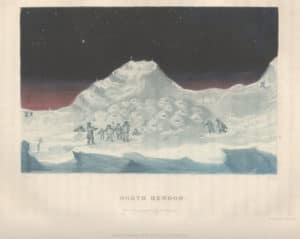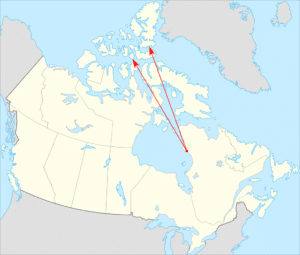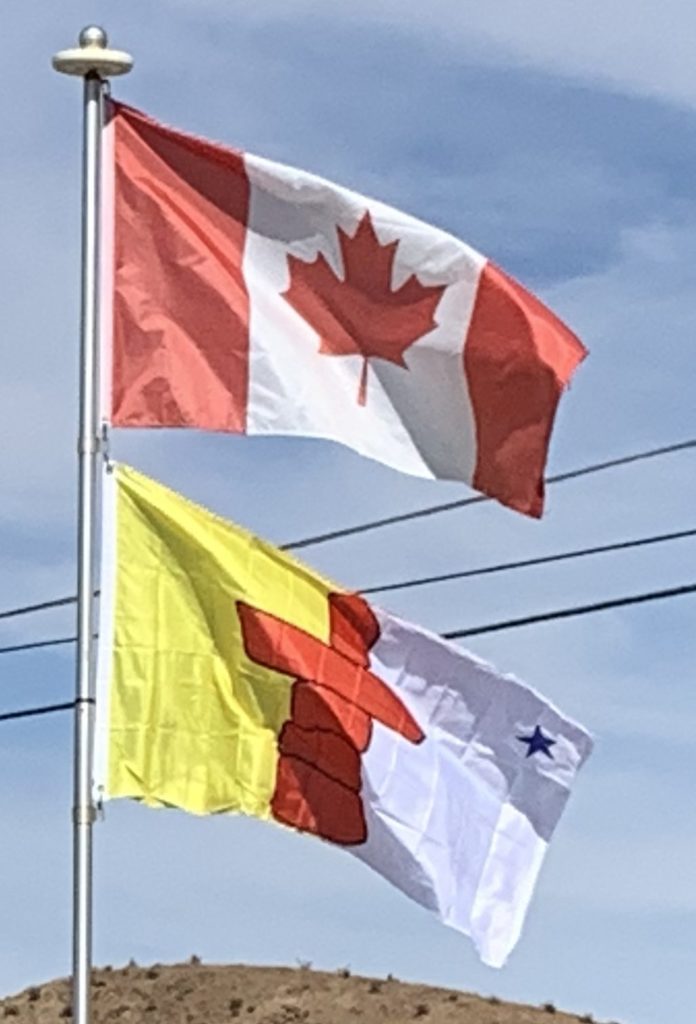In September 2008, researchers reported on the evaluation of existing and newly excavated archaeological remains, including yarn spun from a hare, rats, tally sticks, a carved wooden face mask that depicts Caucasian features, and possible architectural material. The materials were collected in five seasons of excavation at Cape Tanfield. Scholars determined that these provide evidence of European traders and possibly settlers on Baffin Island, not later than 1000 CE (and thus older than or contemporaneous with L’Anse aux Meadows). They seem to indicate prolonged contact, possibly up to 1450. The origin of the Old World contact is unclear; the article states: “Dating of some yarn and other artifacts, presumed to be left by Vikings on Baffin Island, have produced an age that predates the Vikings by several hundred years. So … you have to consider the possibility that as remote as it may seem, these finds may represent evidence of contact with Europeans prior to the Vikings’ arrival in Greenland.”

The written historical accounts of Nunavut begin in 1576, with an account by English explorer Martin Frobisher. While leading an expedition to find the Northwest Passage, Frobisher thought he had discovered gold ore around the body of water now known as Frobisher Bay on the coast of Baffin Island. The ore turned out to be worthless, but Frobisher made the first recorded European contact with the Inuit. Other explorers in search of the elusive Northwest Passage followed in the 17th century, including Henry Hudson, William Baffin and Robert Bylot.
20th and 21st Centuries:
Cornwallis and Ellesmere Islands featured in the history of the Cold War in the 1950s. Concerned about the area’s strategic geopolitical position, the federal government relocated Inuit from Nunavik (northern Quebec) to Resolute and Grise Fiord. In the unfamiliar and hostile conditions, they faced starvation but were forced to stay. Forty years later, the Royal Commission on Aboriginal Peoples issued a report titled The High Arctic Relocation: A Report on the 1953–55 Relocation. The government paid compensation to those affected and their descendants and on August 18, 2010, in Inukjuak, the Honourable John Duncan, PC, MP, previous Minister of Indian Affairs and Northern Development and Federal Interlocutor for Métis and Non-Status Indians apologized on behalf of the Government of Canada for the relocation of Inuit to the High Arctic.

Discussions on dividing the Northwest Territories along ethnic lines began in the 1950s, and legislation to do this was introduced in 1963. After its failure, a federal commission recommended against such a measure. In 1976, as part of the land claims negotiations between the Inuit Tapiriit Kanatami (then called the “Inuit Tapirisat of Canada”) and the federal government, the parties discussed division of the Northwest Territories to provide a separate territory for the Inuit. On April 14, 1982, a plebiscite on division was held throughout the Northwest Territories. A majority of the residents voted in favor and the federal government gave a conditional agreement seven months later.
